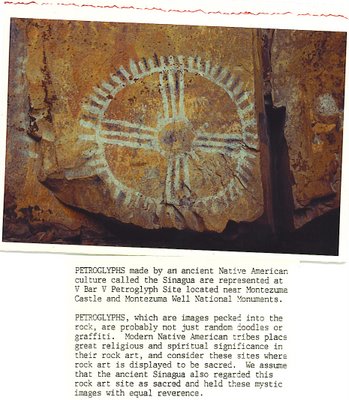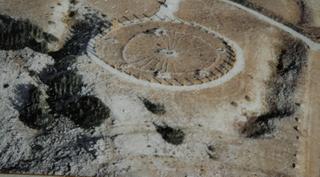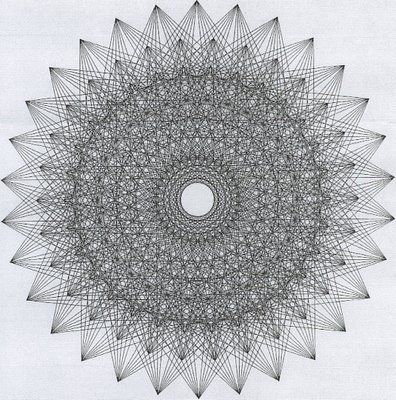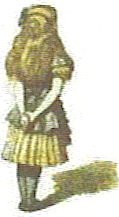The concept of Tao is based upon the understanding that the only constant in the universe is change (see I Ching, the "Book of Changes") and that we must understand and be in harmony with this change. The change is a constant flow from non-being into being, potential into actual, yin into yang, female into male. The symbol of the Tao, called the Taijitu, is the yin yang confluently flowing into itself in a circle.
How many times, not only in your waking life, did you think you had attained a certain peace, that would over take you when it seemed all was right? That you realized in your dream time, that the male/female depending on your gender, would have "image signs" within the dynamics of that unconsciousness, to maintain this balance?
The Dance of Colors
Courtesy Edgar Fahs Smith Memorial Collection, Department of Special Collections, University of Pennsylvania Library
As if "the octave" has a place within expression. That such harmony allowed more vibration "to enter" then at any other time? Resonating with nature? So, if the arrow of time is expressed one way, which way was "the energy" ever the strongest? Which way have the matters encased?
Something "to strong" one way, having something in "reaction" to "soften it," or "change it" from what it could be projected? There is the "artful way" of such consideration's as one studies the I CHING, and this interplay of "probable outcomes?"
Encased within the "uncertainty of action in unconsciousness" might we have dismissed it as some wishful thinking, that such order rests within all of us, even as we dream and walk a path from the future to the world's past?
Who would have thought such characteristics to the structure of the family, arranged as Mothers, Fathers, sons and daughters "in the lines and there arrangements?" Only 64 possible moves? If the lines were changing, then even more so? Which ones?
The Energy Manifests
Archetypes
The contents of the collective unconscious are called archetypes. Jung also called them dominants, imagos, mythological or primordial images, and a few other names, but archetypes seems to have won out over these. An archetype is an unlearned tendency to experience things in a certain way.
The archetype has no form of its own, but it acts as an "organizing principle" on the things we see or do. It works the way that instincts work in Freud's theory: At first, the baby just wants something to eat, without knowing what it wants. It has a rather indefinite yearning which, nevertheless, can be satisfied by some things and not by others. Later, with experience, the child begins to yearn for something more specific when it is hungry -- a bottle, a cookie, a broiled lobster, a slice of New York style pizza.
The archetype is like a black hole in space: You only know its there by how it draws matter and light to itself.
Some may say I offer a "tainted verison" of what is happening with the science, by relating it to the "psychological domains?" Yet, I find it necessary to understand what is driving this quest for "banging" the Big Toe Theory of Everything and it's relations? How something can be "liminocentrically" occupying the mind in it's quest for understanding wholeness?
If it is thus then, whether you think it right as a prerequisite or not, I would have to say, that it would have to include our "psychological states" as well. Why, some lean toward identifying this aspect within the very "nature of the self" as part of the science? Not only in the cosmology at large, but in the micro perspective of what is enhanced through the constituent building blocks of matter as we exchange what this energy would look like at it's core, at a distant. We delve ever deeper into the nature, then why not into our selves as we look at this compaction of the individual process?
Not to exploit the ego into self gratification as it think it's the centre of the universe?:) But to help it understand "the laws of nature" are hidden amongst our words, dreams, and possibly have geometrical inclinations of there own, on a level that has not been understood before.
ON "Visualization and changing perspective," the domains that we reside in, make it difficult to see this "wider perspective" about our involvement within the dynamics of discovery?
Lest you understand the "emotive forces" the world has, which can colour our views, how would you know, that the world works on the physical level, has it's counterpart, in the world inside, is revealed on the outside?
So while this energy relation has been brought to view, the dynamics of "this circle" had to have a relation in the reductionist world of science, least we not understand the effect of the energy as we assign each particle it's place as an "oscillatory one?"
See:







